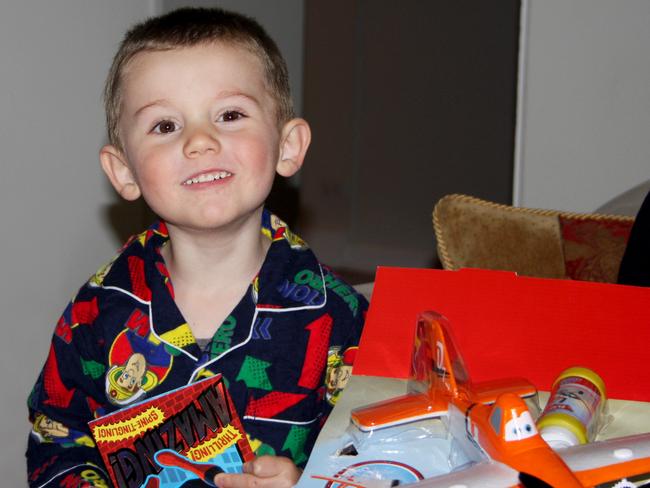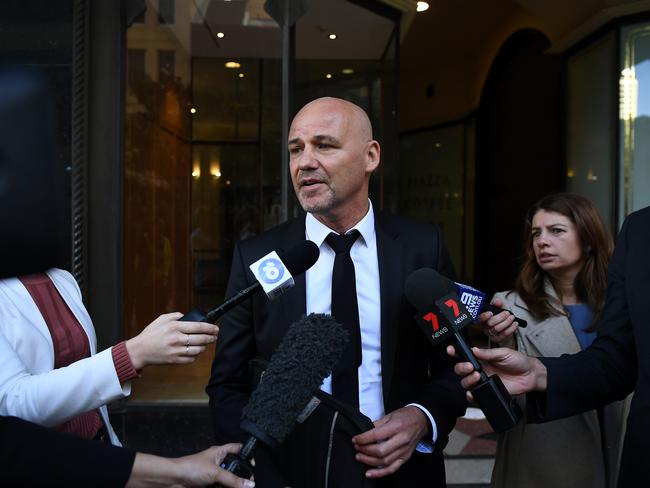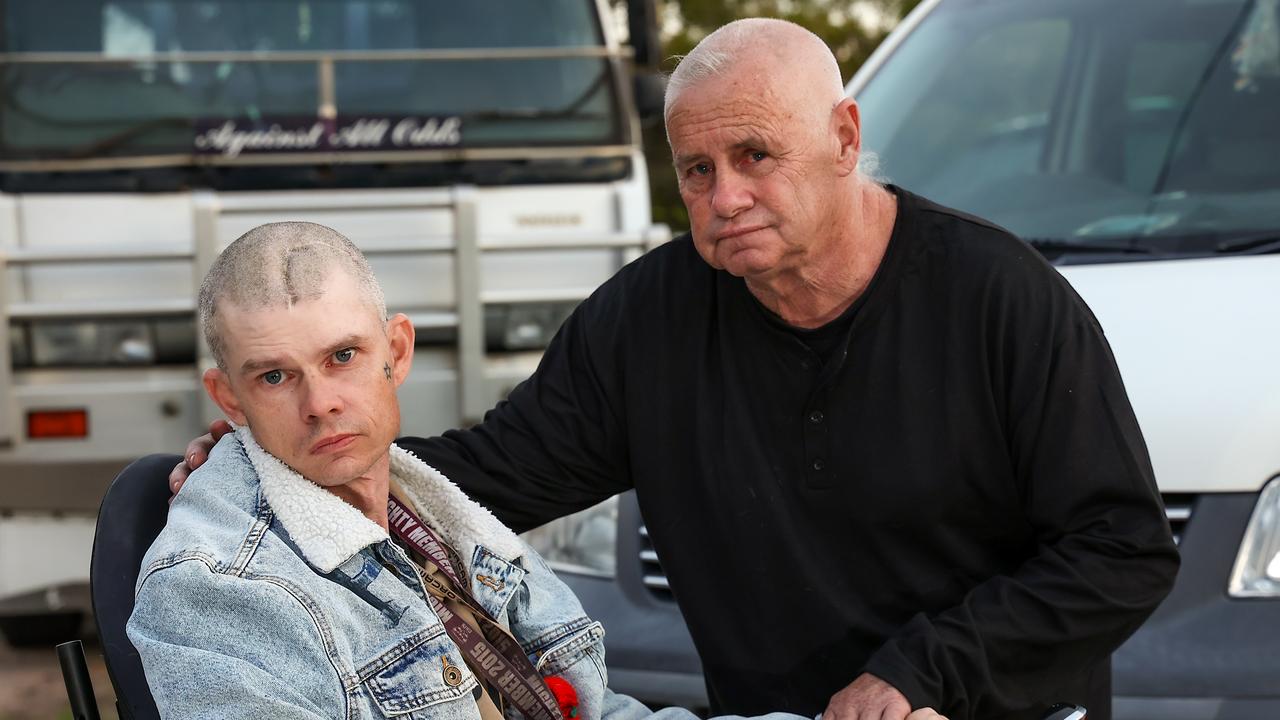Police in WA and Victoria deliver textbook investigations
The brilliance of modern policing methods was on display in Victoria’s high country and the WA search for Cleo Smith. Let’s hope the William Tyrrell case is the next breakthrough, writes Andrew Rule.

Andrew Rule
Don't miss out on the headlines from Andrew Rule. Followed categories will be added to My News.
At the time of writing, police have just charged the Jetstar pilot and serial camper they have watched for months because they believe he is the key to the Wonnangatta mystery: the disappearance of Russell Hill and Carol Clay in March last year.
The armed arrest of the unhappy camper came three weeks after the happy ending to the disappearance of little Cleo Smith in Western Australia, a case that for 18 days seemed to have every potential to be another nightmarish “Maddie McCann” mystery.
The Cleo Smith and Wonnangatta cases will be tried in court, of course. But it seems that both Victorian and West Australian police have delivered textbook investigations in solving disappearances.
That textbook might become compulsory reading north of the Murray, where police still seem to be floundering in the quicksand of the William Tyrrell case.
William, the boy in the Spider-Man suit, was three when he vanished from his foster grandmother’s house at Kendall in northern NSW seven years ago.
The first thing that (now former) lead investigator Gary Jubelin had to do was to eliminate William’s network of biological and foster relatives.


Jubelin, responding to a thinly veiled swipe from former colleagues last week, is adamant he put William’s foster parents through the wringer.
Clearly returning fire to the NSW police chief, a steely Jubelin insisted he used every legal tactic in the interrogator’s handbook to shake any inconsistencies in the foster parents’ story.
He said he “ambushed” the couple with a sudden series of accusatory questions designed to shock them into an admission or a slip-up if they were hiding anything. He then interviewed them formally and bugged their car to see what they said in private.
After Jubelin was convinced the family members were not lying, his crew cranked up the investigation into “persons of interest” who might have entered the street at the moment the little boy wandered into the front garden.
It was Jubelin’s recording of a conversation with one of those potential suspects with his telephone that led to disciplinary action against him and his resignation from the force. Things have changed a bit since the days when Roger Rogerson and other rogue detectives robbed, shot and drowned suspects and witnesses.
Whatever the facts turn out to be in the Tyrrell case, if and when they are eventually uncovered by “new broom” investigators now handling it, one thing is clear: any sudden disappearance without an obvious culprit is a huge challenge for police.
With young children like Cleo or William, at least it was clear almost from the start that they’d probably been abducted. If they had been teenagers – like Bung Siriboon was, for instance – then the understandable initial police reaction that “it’s just another runaway” might have delayed proper investigation for days, let alone that vital first 24 hours.
When teens and adults vanish, the police’s lingering suspicion (based on statistical likelihood) is that the missing will turn up when it suits them. Faced with this official presumption that most missing persons are runaways, families have to agitate strongly to get prompt action.
In Victoria, the sophisticated and intensive investigation run by Insp. Andrew Stamper and his missing persons squad obscures the fact that the Wonnangatta campers’ disappearance at first fell into a big crack – the millions of hectares of wilderness separating Sale police on the Gippsland side of the ranges from Myrtleford police to the north.
It took days before any searching was done in the Wonnangatta Valley and weeks before it was done methodically and well, erasing initial suspicions that the couple could have got lost and died of exposure, as happens in the mountains from time to time.
When searchers found nothing, Stamper’s crew took over, using every technological and forensic method to identify and eliminate potential suspects: a marathon version of the West Australian police’s painstaking search for clues to Cleo Smith’s abduction.


Both investigations owe something to the brilliant police work that led to the swift arrest of Adrian Ernest Bayley for the rape and murder of Jill Meagher, the crime that transfixed Melbourne in late 2012 even more than the Ristevski case four years later.
Detectives had to put Jill’s husband Tom Meagher through the same ordeal that Gary Jubelin imposed on William Tyrrell’s family members.
To Meagher’s eternal credit, he understood that to do their job properly, the police had to rule him out first. Once detectives established that Tom’s mobile phone was with him in his Brunswick apartment at 4.30am, the same time as Jill’s phone was travelling along a freeway northwest of the city, it was obvious he wasn’t the killer.
It took the police just six days to nail Bayley, a violent sex offender who had been freed by the parole board acting on Corrections advice – and who, after reoffending, was subsequently granted bail unopposed by Geelong police.
The Wonnangatta investigators have taken 20 months to make an arrest but it is a case in which building evidence methodically and accurately matters more than speed.
Leaving aside the confusion and slow start by local police in the first week, the investigation leading to this week’s arrest seems an outstanding exercise in modern forensic and technical techniques. Perhaps the same care was taken in the Tyrrell case but that hasn’t yet produced results.
When there’s no obvious offender, the police’s problem is not lack of potential suspects – it’s that they have too many. The trouble is, as investigators work through one suspect after another, as they have in the Tyrrell case, they leave a trail of traumatised and vilified people whose names are forever tainted.
The glare of public interest can be double-edged.
Police routinely exploit it by using the media not only to appeal for witnesses and information but to put pressure on potential suspects.
There’s nothing wrong with that – until there is. The result, at least in the Tyrrell case, is likely to be defamation suits.
If there’s a lesson in the Tyrrell affair for police, the public and the media elsewhere, it’s about the danger of jumping to conclusions, of embracing theories and repeating them until they assume the veneer of fact.
Off-the-record assurances that police “know who dunnit” but “just can’t prove it” because of (insert excuse) are sometimes right. But this supposed inside information can also be wishful thinking, desperation, vindictiveness, boastfulness, bigotry or tunnel vision.
There have been appalling examples of clumsy scattergun investigations in the past, which is a subject for another day. The truth is, modern investigators are clearly better at unravelling the mystery of the missing than the old-school cops were.
The now universal use of mobile phones, electronic banking and credit cards, and security cameras and “dashcams”, means that all of us are traceable bar a few hermits who live off the grid.
Commit a crime serious enough to attract police and public attention these days, and the full force of investigative technology will get you eventually.
The techniques used to catch Adrian Bayley and to investigate Cleo Smith’s alleged abduction and the disappearance of Karen Ristevski are formidable, as the man charged with the Wonnangatta murders might agree.
Some day, the same methods might lead to whoever took William Tyrrell. Maybe.





